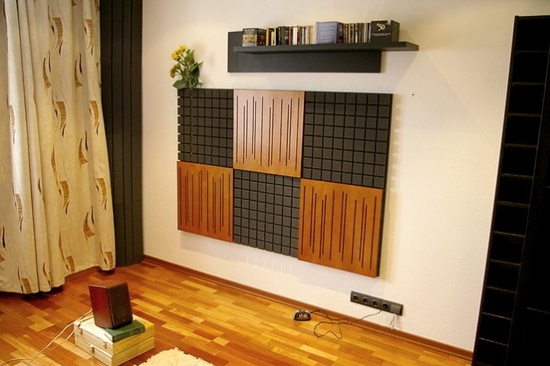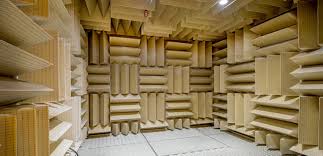Dealing with noisy neighbors can be a challenging and frustrating experience. One of the most common complaints is noise coming from the apartment above.
In this comprehensive guide, we will explore various techniques for soundproofing ceiling upstairs neighbors.
We will discuss the causes of noise, different types of soundproofing materials, and various installation methods. By following this guide, you can achieve a more peaceful and quiet living environment.
Understanding the Causes of Noise
Before diving into the soundproofing solutions, it’s essential to understand the causes of noise from upstairs neighbors. Noise can come from various sources, such as footsteps, furniture movement, music, and loud conversations.
The noise travels through the floor and ceiling structure, making it difficult to pinpoint the exact source.
Several factors contribute to noise transmission between floors, including the type of flooring, the building’s age, and the materials used in the construction.
By identifying the specific causes of noise, it’s easier to choose the most effective soundproofing method for your situation.
Types of Noise
There are two primary types of noise – airborne and impact noise. Understanding the difference between these types of noise can help you determine the best soundproofing strategy for your ceiling.
Airborne Noise
Airborne noise is generated by sound waves traveling through the air, such as music, voices, or television sounds. This type of noise can easily pass through walls and ceilings, especially if they are not well-insulated or contain gaps.
Impact Noise
Impact noise, also known as structure-borne noise, is caused by vibrations from physical contact with a surface. Examples include footsteps, furniture being moved, or objects dropping on the floor. These vibrations travel through the building structure, causing noise in other parts of the building.
Soundproofing Materials
Various materials can be used for soundproofing ceiling upstairs neighbors. These materials can be categorized into four main groups: damping compounds, insulation, mass-loaded vinyl, and acoustic foam.
Damping Compounds
Damping compounds are designed to absorb vibrations and reduce noise transmission. They can be applied to walls, ceilings, and floors to create a barrier that helps prevent noise from passing through. Common damping compounds include Green Glue, QuietRock, and Auralex Acoustics.
Insulation
Insulation materials are used to create a barrier between the noise source and the living space. They can be installed in walls, ceilings, and floors to reduce sound transmission. Some common insulation materials include fiberglass, mineral wool, and cellulose.
Mass-Loaded Vinyl
Mass-loaded vinyl (MLV) is a dense, flexible material designed to add mass to walls, ceilings, and floors, reducing the transmission of noise. It can be installed underneath drywall or in between layers of drywall to create a soundproof barrier.
Acoustic Foam
Acoustic foam is a lightweight, porous material that absorbs sound waves and reduces reverberation. It can be installed on walls, ceilings, and even some floors to help dampen noise.
Assessing Your Ceiling
Before starting any soundproofing project, it’s crucial to assess the current state of your ceiling. Here are some factors to consider:
- Ceiling height: A higher ceiling might require more materials or a different installation approach.
- Ceiling material: Determine if your ceiling is made of drywall, plaster, or another material, as this can affect the soundproofing method.
- Ceiling structure: Identify if your ceiling has exposed beams or joists, as this might require additional insulation or soundproofing materials.
- Existing soundproofing: Determine if there is any existing soundproofing material in place, such as insulation or acoustic panels.
Read More :
How to Soundproof Bathroom Wall : Blockout Noise
How To Soundproof A Room From Outside Noise?
Soundproofing Installation Methods
There are several methods to install soundproofing materials on your ceiling. The choice of method will depend on the type of material used, the ceiling structure, and your budget.
Direct Installation
Direct installation involves attaching the soundproofing materials directly to the existing ceiling. This method can be used for acoustic panels, insulation, and mass-loaded vinyl. It is relatively simple and cost-effective but may not provide the highest level of soundproofing.
Floating Ceiling
A floating ceiling is a method of installing soundproofing materials by creating a new ceiling structure below the existing one. This new structure is isolated from the original ceiling using resilient channels, which help reduce noise transmission.
A floating ceiling can be more effective at soundproofing but is also more complex and expensive to install.
Drop Ceiling
A drop ceiling, also known as a suspended ceiling, is another option for installing soundproofing materials. This method involves hanging a new ceiling structure below the existing one using metal grids and acoustic tiles.
Drop ceilings can provide excellent soundproofing and can be a more aesthetically pleasing option. However, they can be more expensive and reduce the overall ceiling height.
Acoustic Panels

Acoustic panels are an effective solution for soundproofing ceiling upstairs neighbors. These panels are designed to absorb sound waves and reduce noise transmission. They can be installed directly on the ceiling or as part of a floating or drop ceiling system.
Types of Acoustic Panels
There are several types of acoustic panels available, including:
- Fabric-covered panels: These panels consist of a rigid fiberglass core wrapped in fabric. They are available in various colors and designs, making them an attractive option for soundproofing.
- Foam panels: Foam panels are made of open-cell foam and are lightweight and easy to install. They can be an affordable option for soundproofing but may not provide the highest level of noise reduction.
- Perforated wood panels: These panels are made of wood with small holes drilled throughout, allowing sound waves to pass through and be absorbed by insulation behind the panel.
Installation Tips for Acoustic Panels
When installing acoustic panels on your ceiling, consider the following tips:
- Measure the ceiling area and determine the number of panels needed.
- Choose a panel layout that provides even coverage across the entire ceiling.
- Use a combination of adhesive and mechanical fasteners to secure the panels to the ceiling.
- Seal any gaps between panels and the ceiling with acoustic caulk to prevent sound leakage.
Soundproofing Drywall
Soundproofing drywall is another option for reducing noise from upstairs neighbors. This type of drywall is designed with additional mass and damping materials to help absorb and block sound waves.
Soundproofing drywall can be installed directly on the existing ceiling or as part of a floating ceiling system.
Types of Soundproofing Drywall
There are several brands and types of soundproofing drywall available, including:
- QuietRock: QuietRock is a popular soundproofing drywall brand that offers various thicknesses and performance levels.
- National Gypsum SoundBreak XP: This soundproofing drywall product features a layer of viscoelastic polymer between two layers of gypsum, helping to absorb and block sound waves.
- Certainteed SilentFX QuickCut: SilentFX QuickCut is a soundproofing drywall product designed for easy installation and high performance.
Installation Tips for Soundproofing Drywall
When installing soundproofing drywall on your ceiling, consider the following tips:
- Remove any existing ceiling fixtures, such as lights or ceiling fans, before installation.
- Measure and cut the drywall panels to fit the ceiling area.
- Use a combination of adhesive and screws to secure the panels to the ceiling or resilient channels (if using a floating ceiling system).
- Seal any gaps between panels and the ceiling with acoustic caulk to prevent sound leakage.
- Finish the drywall with tape, joint compound, and paint to create a seamless appearance.
Insulation Solutions
Insulation can be an effective solution for soundproofing ceiling upstairs neighbors, especially when used in combination with other soundproofing materials. Insulation helps create a barrier between the noise source and the living space, reducing sound transmission.
Types of Insulation
There are several types of insulation suitable for soundproofing, including:
- Fiberglass insulation: Fiberglass insulation is a lightweight, affordable option for soundproofing. It can be installed between ceiling joists or as part of a drop ceiling system.
- Mineral wool insulation: Mineral wool insulation is denser than fiberglass insulation and provides better soundproofing performance. It can also be installed between ceiling joists or as part of a drop ceiling system.
- Cellulose insulation: Cellulose insulation is made from recycled paper products and can be blown into ceiling cavities or installed in batt form. It provides good soundproofing performance but may not be suitable for all ceiling structures.
Installation Tips for Insulation
When installing insulation for soundproofing, consider the following tips:
- Choose the appropriate insulation type and thickness for your specific situation.
- Install insulation between ceiling joists, ensuring it is evenly distributed and fills the entire cavity.
- Use a vapor barrier to help prevent moisture-related problems.
- Combine insulation with other soundproofing materials, such as acoustic panels or soundproofing drywall, for maximum noise reduction.
Additional Soundproofing Techniques

In addition to the primary soundproofing methods discussed above, there are several additional techniques that can help reduce noise from upstairs neighbors.
These techniques can be used in combination with other soundproofing materials for maximum noise reduction.
- Seal gaps and cracks: Use acoustic caulk to seal any gaps or cracks around the ceiling perimeter, light fixtures, and electrical outlets to prevent sound leakage.
- Install door sweeps and weatherstripping: Door sweeps and weatherstripping can help reduce noise transmission between rooms and from the hallway.
- Use area rugs and carpeting: Area rugs and carpeting can help absorb impact noise from footsteps and furniture movement.
- Place furniture strategically: Arrange furniture to create sound barriers and help absorb noise, such as placing bookshelves against a shared wall.
Maintaining a Peaceful Living Environment
Soundproofing ceiling upstairs neighbors can significantly improve your living environment, making it more peaceful and enjoyable.
By understanding the causes of noise, selecting appropriate soundproofing materials, and implementing effective installation techniques, you can achieve a quieter home.
It’s essential to maintain open communication with your neighbors and property management to address any ongoing noise concerns and ensure a harmonious living experience for all residents.
Remember to consider all the factors involved in soundproofing, including budget, ceiling structure, and the specific noise issues you’re facing.
With the right approach and materials, you can effectively soundproof your ceiling and enjoy a more peaceful living environment.
